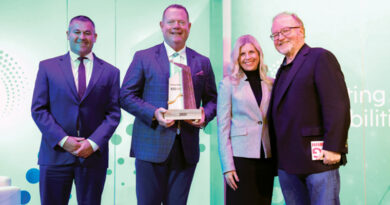PNM at CableLabs®
By Jason Rupe
CableLabs went into high gear with proactive network maintenance (PNM) not long ago and has big plans for the future of PNM. Success will rely on the cable community’s strong focus on furthering PNM in several directions.
Much of the PNM-related work at CableLabs gets its start in the PNM working group, known as the Intelligent Generation Next Operations Systems (InGeNeOSTM) working group. Over the last few months, the group has discussed PNM in depth for DOCSIS 3.1, full duplex (FDX) DOCSIS architecture, and remote PHY (R-PHY) and other distributed access architectures (DAAs), culminating in positions that support the specification teams. Sub-groups are working on FDX positions and are just beginning to document DOCSIS 3.1 best practices for an upcoming report.
The InGeNeOS working group has also begun conducting lab testing to evaluate various hypotheses, reproduce field observations, and develop methods. Late last year, the group met to conduct tests of echo and noise impairments on plant configurations that recreated observed field conditions. The team reproduced curious field observations that demonstrated useful troubleshooting techniques using orthogonal frequency division multiplexing (OFDM) receive modulation error ratio (RxMER) per subcarrier and spectrum analysis.
• Just like with spectrum analysis data, amplitude ripple in OFDM RxMER results indicates a micro-reflection (echo) in the signal path.
• In some conditions, a noise source upstream from a CM can make the ripple unobservable in the RxMER plot, though still visible in a spectrum capture.
• There are combinations of network configurations and conditions where an edge roll off in the RxMER per subcarrier plot can be observed.
The InGeNeOS group plans to conduct more testing to further industry knowledge and best practices.
CableLabs is supporting interoperability testing for PNM capability verification, particularly with new architectures including fiber-deep DAA, and FDX DOCSIS architecture. Interoperating vendors bring PNM capabilities to the industry and have expressed the need for PNM support in interoperability testing. With capabilities like our cable modem validation application (CMVA) and our combined common collection framework (XCCF), CableLabs is ready. As new cable architectures and solutions are created, they must also be maintained, proactively and reactively. Thus, CableLabs supports reliable maintenance information from the networks.
The CableLabs’ PNM team has plans to use it with many applications and needs, including and beyond PNM. The strength of a common collection framework assures data collection management and flexible support for many operations and revenue purposes beyond PNM, including power monitoring, capability testing, LTE ingress detection, and profile management.
One application that was built on the foundational XCCF is our CMVA. It currently supports PNM acceptance test plan (ATP) testing of CMs at Kyrio® and is available for use by member vendors and operators, too. As a handy method for displaying data from CMs, it serves as an excellent general test tool and for developing PNM methods.
The PNM team at CableLabs will be focusing efforts in 2019 to further develop our PNM ApplicatioN Environment (PNMANE), which will support open sharing of PNM methods, capabilities, and models in a common framework. The architecture is modular, so anyone can contribute a machine learning module or take a statistical function from it to use on their own.
Let’s not forget about Wi-Fi PNM. CableLabs’ Wi-Fi PNM team has demonstrated there is value in Wi-Fi performance data and has developed industry solutions for collection and use of these data in cooperation with the Wi-Fi Alliance.
As N+0, DAA, and FTTH architectures will all have more optical components in the signal path, optical PNM becomes more important and thus is a future focus for CableLabs and InGeNeOS.
PNM continues to grow and evolve, providing all cable operators with valuable tools to better maintain and troubleshoot their networks. While PNM is focused on proactive, operators practicing reactive maintenance can make small steps toward being more proactive, using the same tools. The body of work in this special issue is sure evidence of the value of PNM and expectations for much more to come.
 Jason W. Rupe, Ph.D.
Jason W. Rupe, Ph.D.
Principal Architect for
Proactive Network Maintenance
CableLabs
Jason got his Ph.D. modeling large scale systems and networks for performance and reliability. He has held titles including senior technical staff and director at USWEST, Qwest, Polar Star Consulting, and Tenica. He was the Managing Editor for the IEEE Transactions on Reliability, and has several IEEE roles currently including Denver Section Chair, VP Conferences for Reliability Society, and co-chair of IEEE Blockchain initiative. He is the Principal Architect for Proactive Network Maintenance at CableLabs.




